
Digital marketing isn’t easy, especially considering how quickly practices change, but that doesn’t mean some tactics don’t last through the waves.
We’ve been in the marketing game for quite some time now, and we’ve learned how to build a marketing strategy that adapts and stands the test of time.
By the end of this article, you’ll know the 10 most critical digital marketing tactics to implement in your campaigns and improve your digital marketing results.
Digital Marketing Best Practices
- Establish Your Digital Marketing Goals
- Target Specific Audiences
- Invest In SEO
- Use Content Marketing
- Utilize AI Tools
- Use Email Marketing
- Use Omnichannel Marketing
- Do Competitor Analysis
- Use Retargeting To Increase ROI
- Monitor Campaign Performance
1. Establish Your Digital Marketing Goals
Before you run your first digital marketing campaign, there’s one step you should take first: define your critical campaign goals and metrics.
First, decide what result you want to get from the campaign.
- Do you want more direct sales? If so, what kind of sales, online or offline?
- Or are you more focused on increasing the flow of leads?
- Or perhaps you’re looking to increase engagement with your audience.
The list of possible goals goes on. The important part is that we define that goal and then establish a few key metrics, or KPIs, to measure that goal.
An effective goal is measurable and specific. “Make a lot of revenue” wouldn’t be a great goal because it’s vague and not measurable. Instead, you’d be better off with the goal: “Reduce the Cost-Per-Acquisition(CPA) from the current $53 down to $40.”
Then, we have a clear starting point and goal to move towards. Once we have a goal, we can set a few metrics to help us measure the progress. These key metrics are called KPIs.
Let’s say our goal was to generate 30% more online leads — in that case, our KPI wouldn’t be CPA or revenue. It’d be something like contact form submissions, calls, and response rates.
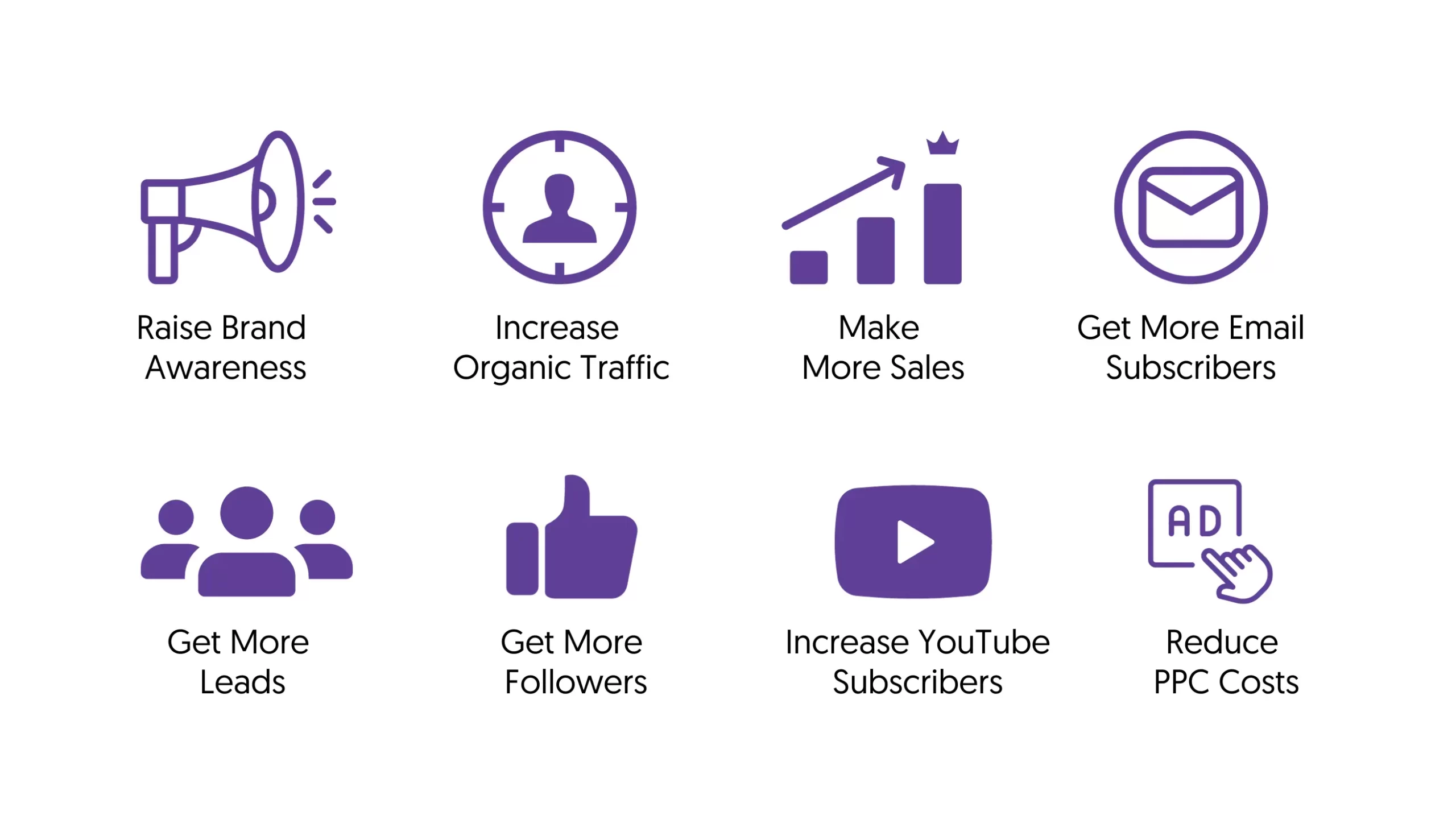
Similarly to how to define your overarching goal, ensure that the KPIs are easily measurable, highly specific, and relevant to the result you’re looking for.
2. Target Specific Audiences
The odds are that your audience doesn’t consist of just one demographic. And as any good marketer knows, different audiences call for different marketing messages.
Let’s use a SaaS company as an example. If you run a SaaS company, your ideal clients are probably small or medium businesses. But is that enough demographic info to create a whole marketing campaign around? Probably not.
To craft high-converting messages, you need to get down to the finest details of your audience and then segment that audience accordingly.
How you market towards an SMB in the food industry will vastly differ from a client that runs a retail operation, for instance.
To break your audience down into specific segments, you’ll need to create a set of customer avatars or buyer persona templates.
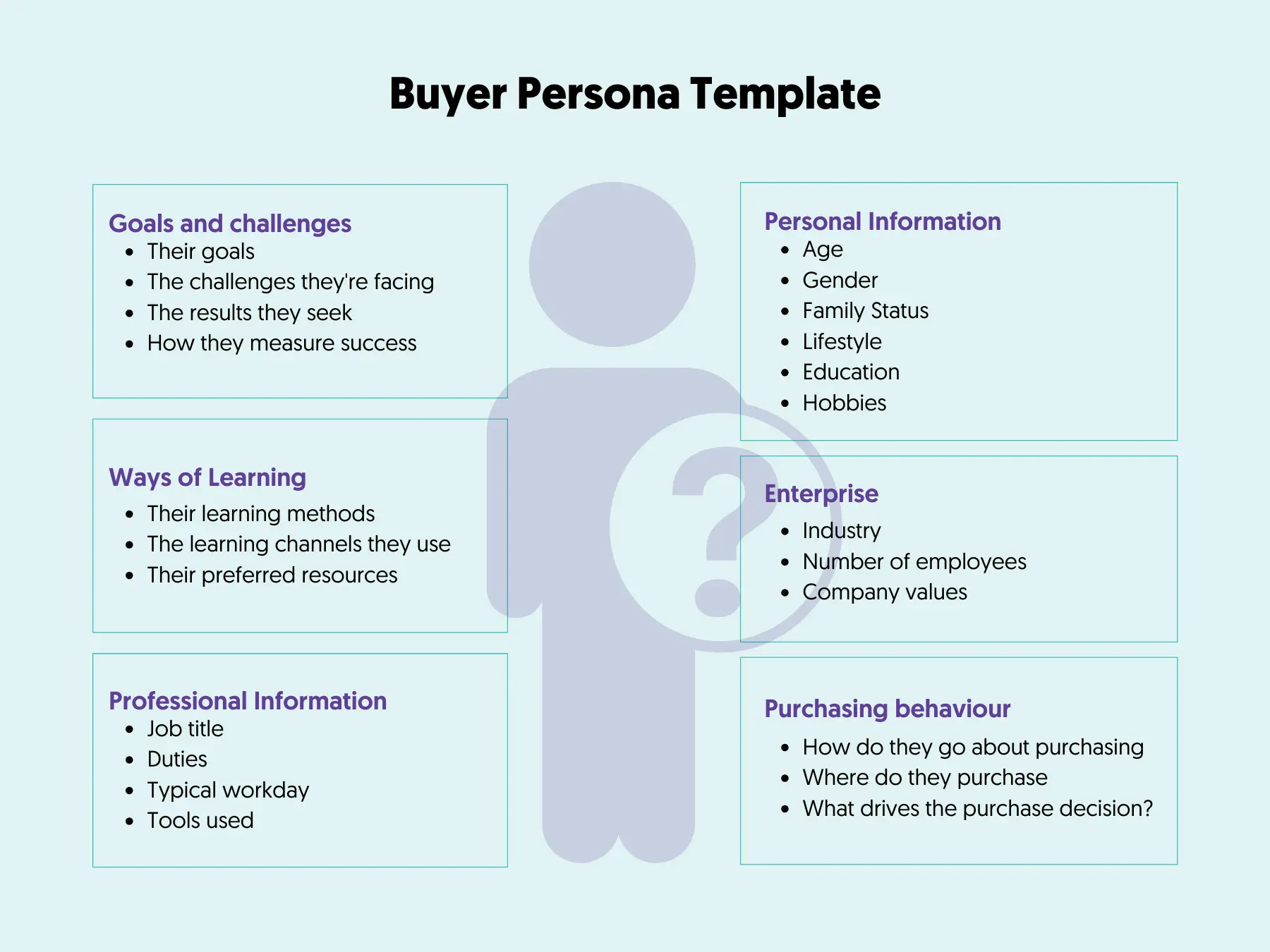
If your target market consists of criminal defense attorneys, your main avatar may look like this:
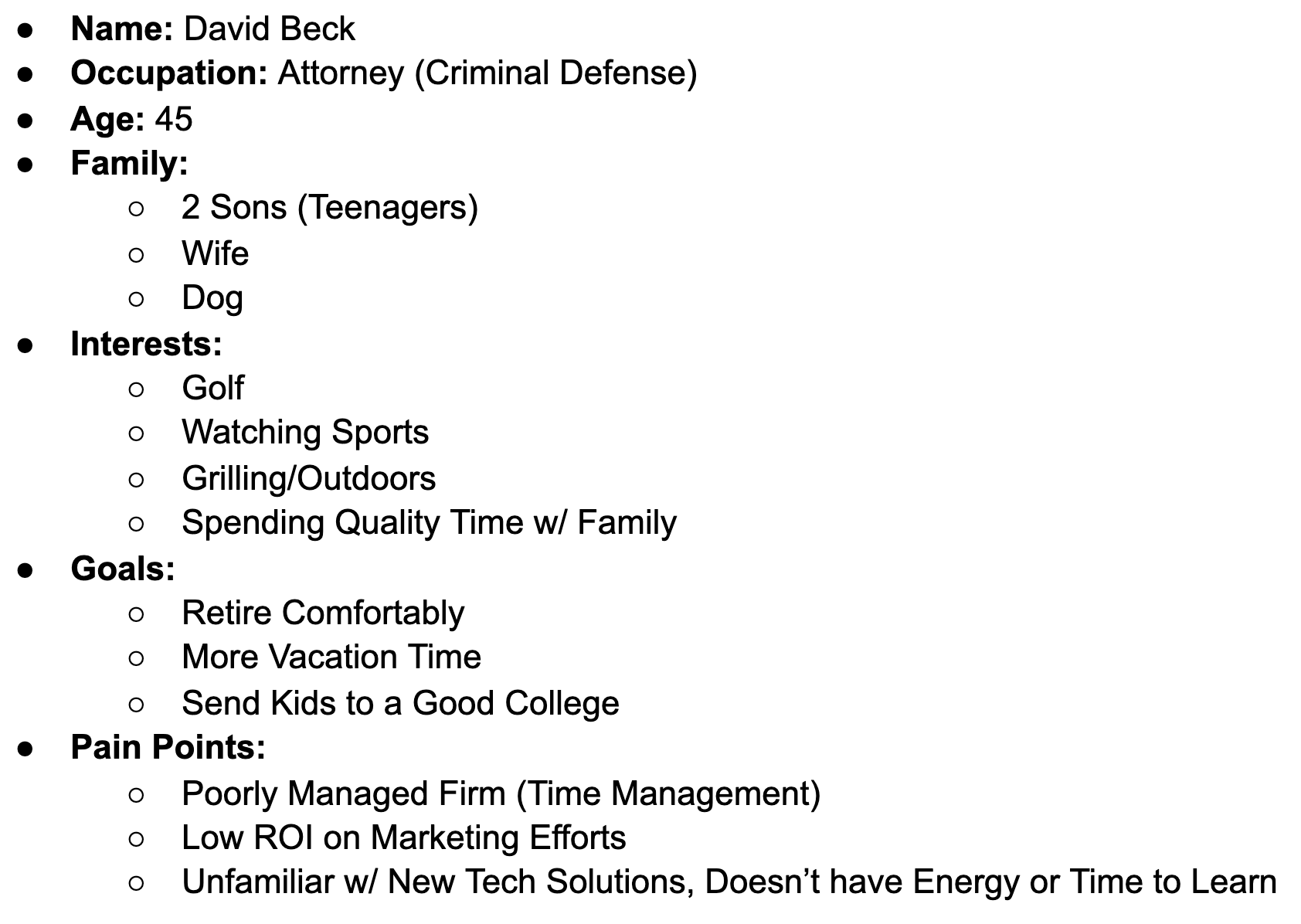
Now, some of you might wonder why all of this is relevant. Why do we need to know David has 2 sons? Or why he wants more vacation time?
And the answer is simple: The more we know about David, the better we can craft marketing messages for him.
Of course, David doesn’t exist; he’s just a rough approximation of the average customer for an attorney business. Not every of your customers will fall perfectly into one of your avatar personas, but that doesn’t mean it won’t help.
If most of your customers have poorly managed firms with lots of wasted time, that’s more “marketing ammo” you can use to drive that pain point home.
And with all that said, we still need to know how to get that information. Luckily, it’s not all that hard.
First, you can use your existing customer base to get a good idea of your audience. But those are far from the only methods. You can also collect the info by surveying your customers, for instance, or tracking prospect activity at each stage of your marketing funnels.
Remember that the more marketing data you have on your target audience, the better.
3. Invest In SEO
Twenty-nine percent of marketers report that organic traffic generates the highest ROI from their marketing channels. SEO is one of the most valuable digital marketing channels.
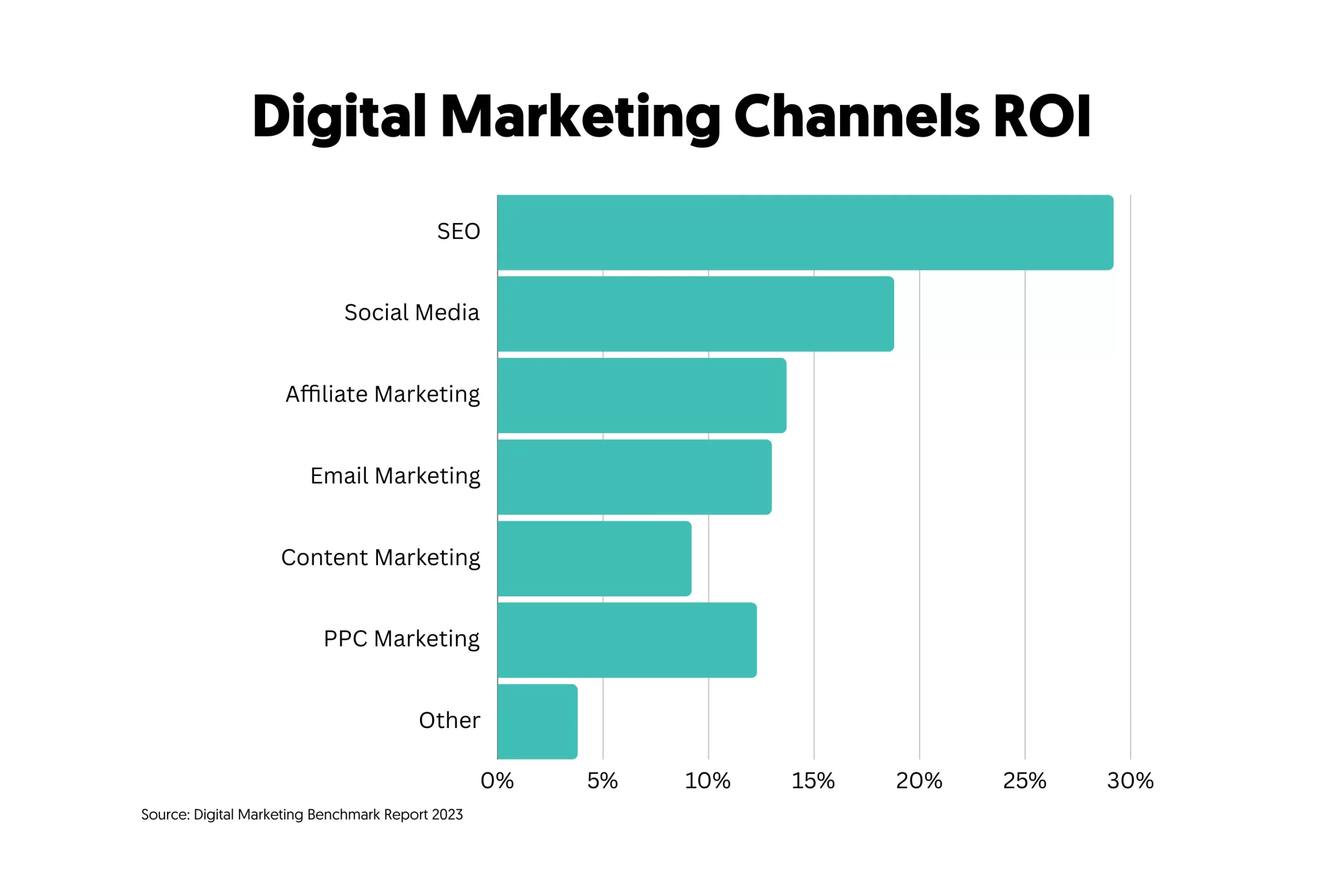
One of the main drawbacks of SEO is that it needs time to build momentum. With SEO marketing, you likely won’t see results for a few months, so you should get started as quickly as possible.
If paid traffic is a short-term solution to generate revenue, organic traffic is the compounding investment that’ll continue to rake in profit.
And just like any compounding investment, the earlier you start, the better.
4. Use Content Marketing
Content marketing is an essential component of an effective digital marketing strategy. A well-structured content marketing strategy can elevate your brand’s reputation, improve SEO, and engage your audience more effectively. It’s not just about creating content but the right content that resonates with your audience and drives engagement.
One of the biggest advantages of content marketing is that it boosts your SEO efforts. Search engines love fresh, relevant content. Regularly updating your website with articles, blog posts, or videos enhances your visibility on search engine results pages (SERPs).
When creating content, focus on addressing the pain points of your target audience. Use customer feedback, social media listening, and market research to identify these pain points. Then, craft your content to offer solutions, advice, or insights. Remember, the goal is to add value, not just to sell.
Furthermore, diversify your content types. Blogs, webinars, podcasts, and videos cater to different audience preferences and can help broaden your reach.
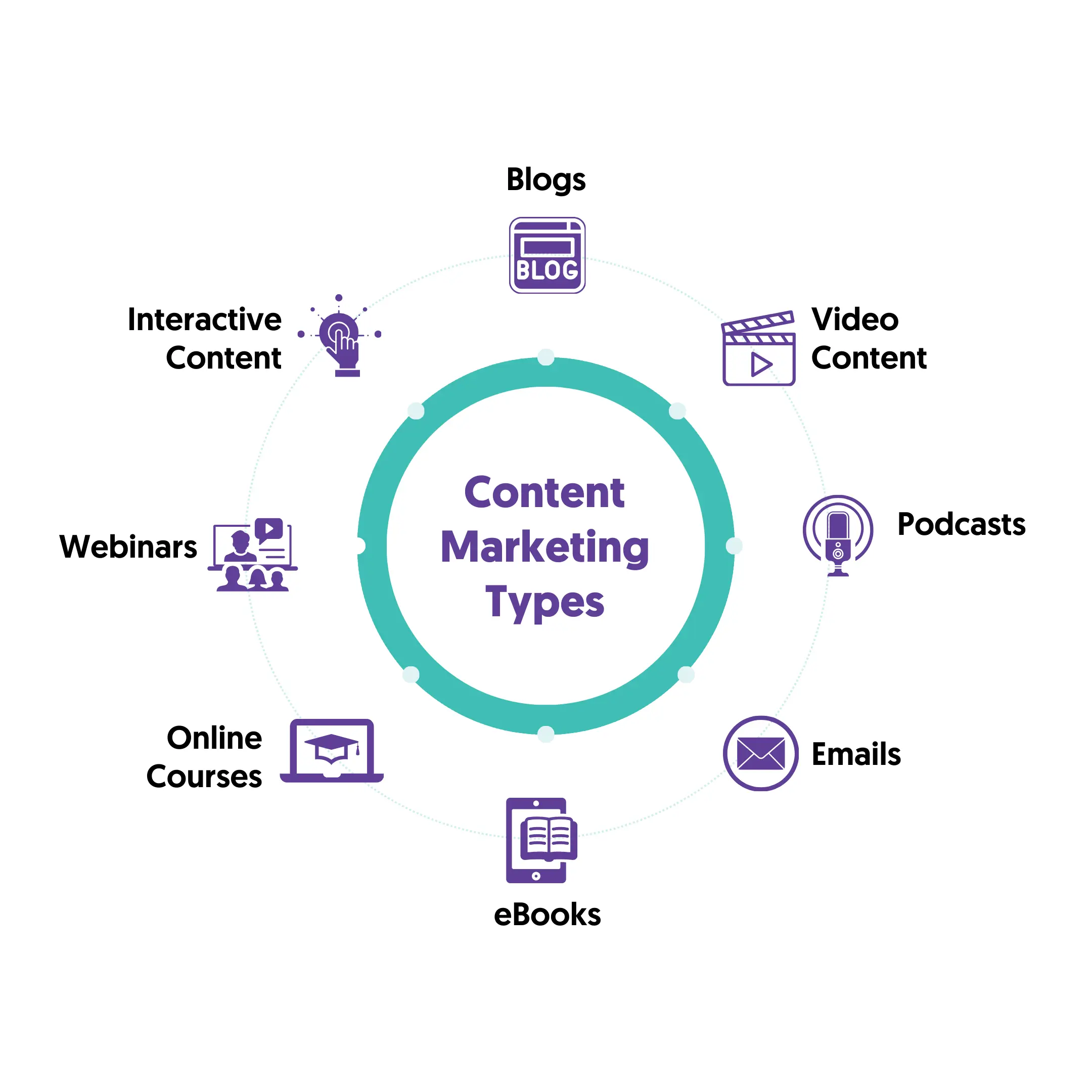
Resources to Learn More Content Marketing
- Best SEO Certifications – a list of the best courses to follow to become an expert in SEO.
- Best Content Marketing Courses – follow any of the courses on the list for content marketing best practices.
5. Utilize AI Tools
Whether it’s data entry, writing emails, or managing the ins and outs of an ad campaign, all of this work takes a ton of time. And the thing is, all of this work doesn’t need to take this much time out of your day — at least not as much of your time.
Instead of manually doing all of the work, one of the best ways to increase your bottom line is using AI tools and automating various parts of your marketing operations.
Utilizing AI tools like ChatGPT can revolutionize your digital marketing efforts, offering a range of capabilities to enhance efficiency and effectiveness. Here are a few key ways ChatGPT can be integrated into your digital marketing strategy:
- Content Generation: ChatGPT can assist in generating creative content ideas or drafting blog posts. This can significantly reduce the time spent on content creation, allowing you to focus on strategy and engagement.
- Customer Service Automation: Implement ChatGPT in your customer service operations to provide instant, 24/7 responses to customer inquiries. This improves customer experience and frees your team to handle more complex queries.
- SEO: Utilize ChatGPT to get suggestions for relevant keywords, help create SEO-friendly titles and meta descriptions, and even offer advice on content structure to improve your site’s search engine ranking.
In addition, Facebook and Google constantly introduce new features to help you automate your ad campaigns and audience-building efforts.
Lookalike audiences, for instance, help you to create entirely new groups of potential customers on Facebook, while Performance Max campaigns can help you bid for ad space without having to babysit each campaign.
The list of ways you can automate a marketing campaign goes on, but here are just a few of them:
- Google Performance Campaigns – With Google automated campaigns, you can have Google do much of the legwork for you by finding potential customers and showing them your ads across Google Maps, Google Search, YouTube, and more — all while staying within your set budget.
- Automated Bidding – Across various ad platforms, you can set your campaigns to bid for ad spots in important places on autopilot, saving you the time and money to do it manually.
- Facebook Automated Campaigns – Similar to Google’s campaigns, Facebook smart campaigns allow you to let Facebook’s algorithm seek out potential buyers using lookalike audiences. This means you can build ad campaigns with massive reach while maintaining a reasonable bottom line.
6. Use Email Marketing
Email marketing remains an essential digital marketing strategy and one of the best channels to engage with your customers and increase sales.
To leverage email marketing effectively, focus on personalization and segmentation and forget about mass emailing.
Personalized emails, which may include the recipient’s name or references to their past interactions with your brand, significantly increase open and click-through rates. Segmentation involves dividing your email list into smaller, more focused groups based on criteria like demographics, purchase history, or engagement level.
This allows you to tailor your messages more precisely to each group’s interests and needs, leading to more effective communication.
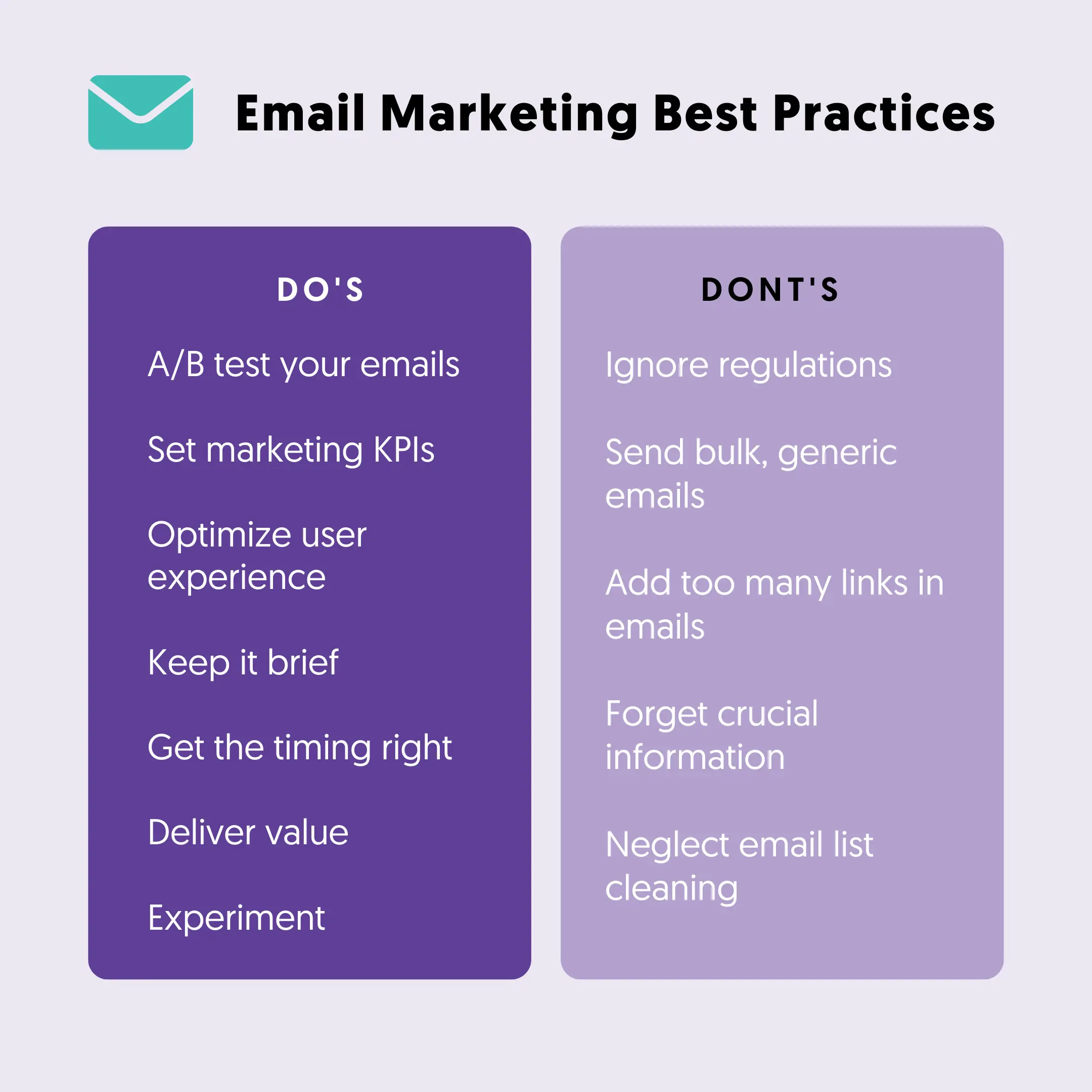
Other email marketing best practices to follow include:
- Crafting compelling subject lines. They are the first thing recipients see, and they determine whether your email gets opened or ignored.
- Consider the timing of your emails. Analyze your audience’s behavior to determine the best time to send emails, maximizing their likelihood of being read.
- Always include a clear call-to-action (CTA) in your emails. Whether visiting a webpage, signing up for a webinar, or purchasing, your CTA should be concise and compelling, guiding recipients toward the next step in their journey with your brand.
7. Use Omnichannel Marketing
Omnichannel marketing is about creating a seamless customer experience across all channels and platforms where your audience interacts with your brand.
Customers engage with a brand in various ways – through social media, email, mobile apps, websites, and even offline channels like physical stores. The key to successful omnichannel marketing is consistency and integration.
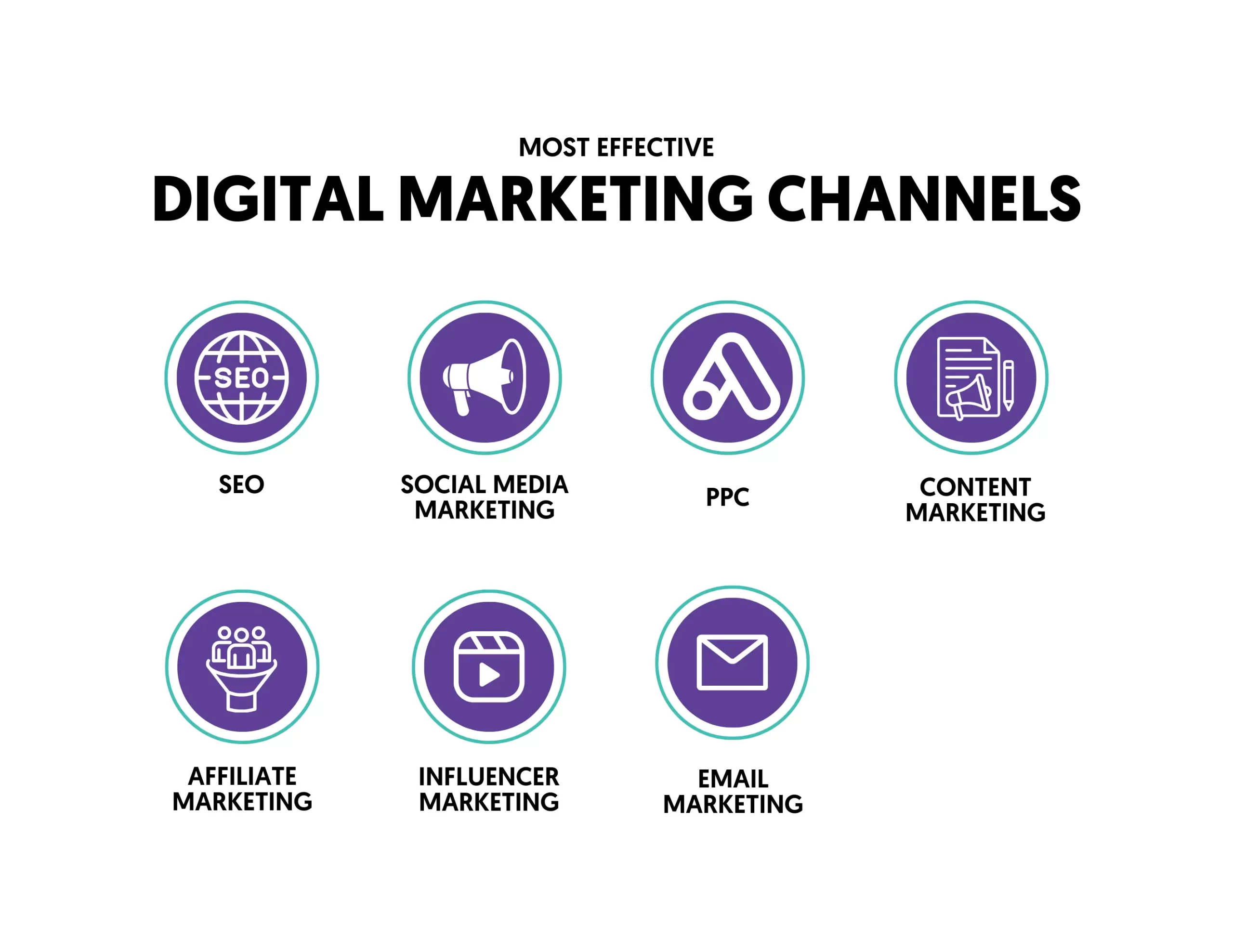
Follow these best practices:
Ensure that your messaging and branding are consistent across all platforms. This consistency helps in building brand recognition and trust. Customers should feel a sense of familiarity, whether reading an email, browsing your website, or walking into a store.
Leverage data to understand how your customers move through the buying journey across these channels. Utilize analytics tools to track customer interactions and preferences.
For example, if a customer adds a product to their cart on your website but doesn’t complete the purchase, you could send them a targeted email reminding them of their cart or even offer a small discount to encourage a purchase.
Integration is another crucial aspect. Your various marketing channels should work together. For instance, your social media ads can direct customers to your website, and your email marketing can promote an in-store event. This creates a cohesive journey for the customer, increasing the chances of conversion.
Finally, don’t overlook the power of customer service in omnichannel marketing. Providing excellent, consistent customer service across all channels can significantly enhance customer loyalty and advocacy.
8. Do Competitor Analysis
Your competitors aren’t just opponents in the marketing battlefield. They’re also some of your greatest sources of information.
Think about it; your main competitors are similarly-sized companies with similar products and similar audiences — it’s practically the perfect case study for you to learn from.
Make a regular practice out of analyzing your competition’s marketing strategies. Find the pieces of their approach that work well and the parts that work not so well, then use that information to improve your own tactics.
To do this, you can use one of the many dedicated tools available on the market. For SEO analysis, you can use Semrush, Ahrefs, or Moz. You can browse the FB Ads library for Facebook advertising, and for Google, you can use their Insights Report to get the job done.
Use the following resources to get started:
- How To See Your Competitors Ads
- How To Find Your Competitor’s SEO Keywords
- How To Do An SEO Competitor Analysis
9. Use Retargeting To Increase ROI
Prospects that click on retargeting campaigns are up to 70 percent more likely to convert than those who aren’t retargeted. And considering that most customers won’t purchase on the first visit to your site, that’s massive.
Retargeting is a unique strategy because it allows you to get more out of each of your other marketing channels — It’s not an exaggeration to say that retargeting is a must for brands that want to maximize their profit.
If you don’t already have a dedicated section of your budget for retargeting campaigns, today is the day to start planning for one.
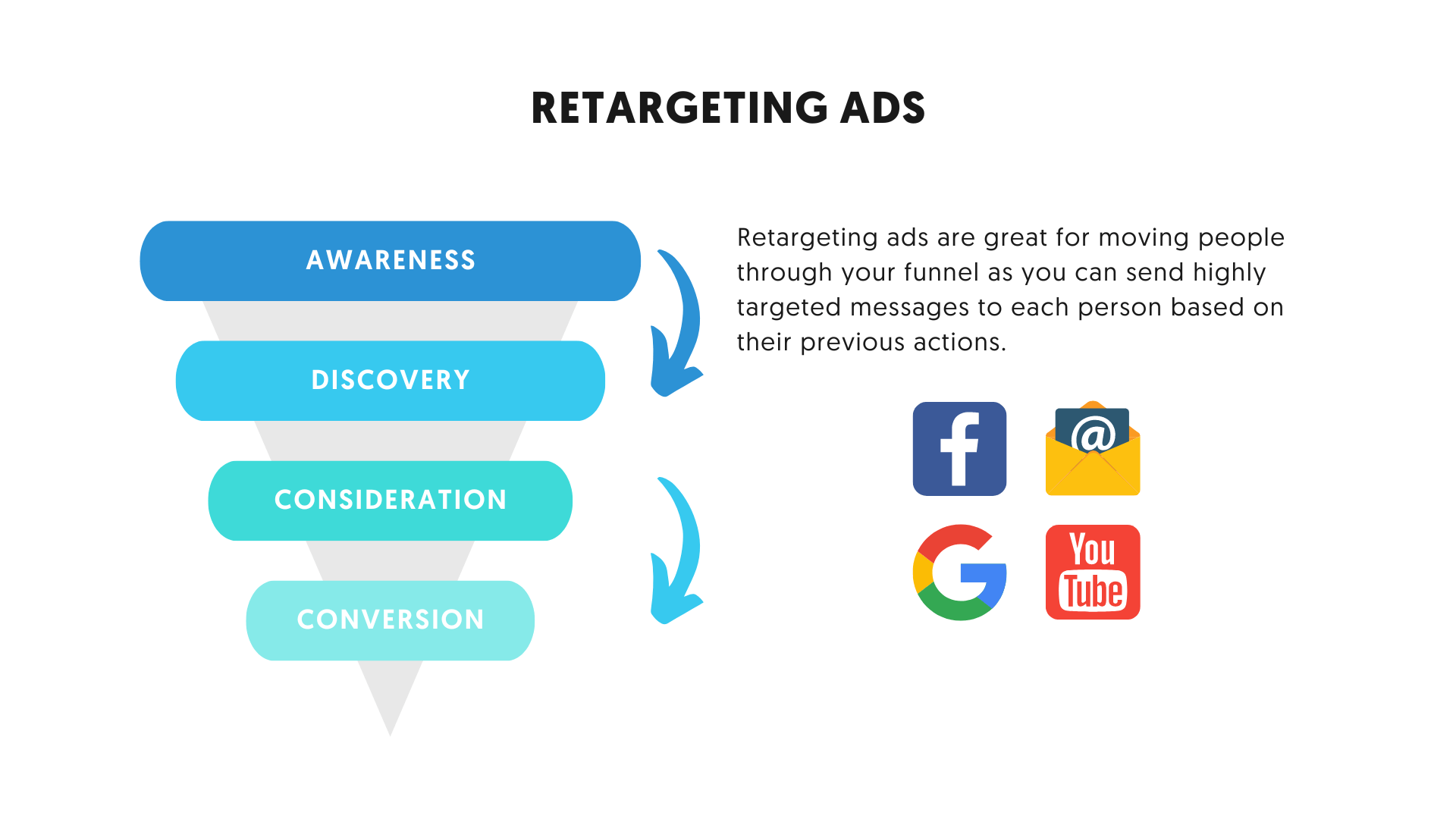
10. Monitor Campaign Performance
If your marketing goal is the journey’s endpoint, your performance tracking is the map that tells you how far along you are.
Try to track your performance metrics as accurately and precisely as possible. The more data you have, the better you can optimize your campaigns.
The exact metrics you’ll have to measure depend on the marketing tactics you put into play. But what is important is to have the right tracking mechanisms before running any online campaign.
For example:
- Before starting any Google Ads, ensure you have enabled conversion tracking. This lets you track what users do after they click on your ads.
- Same with Facebook Ads. Before running any campaigns, add the Facebook Pixel code to your website and configure the important events you want to track.
- SEO and content marketing are a little less straightforward — you’ll need to do much of the tracking on your website and use data from Google Search Console, Google Analytics, and third-party tools to accurately understand how your SEO and content marketing campaigns are performing.
Marketing is all about testing, collecting data, and using that data to improve your approach before repeating the process. All that’s to say is that you must revisit the drawing board regularly and reflect on what can be improved. This also means that staying up to date with the latest marketing trends is vital, too.
Learn More About Digital Marketing
Use the following resources to improve your digital marketing:
- Digital Marketing Guide For Beginners
- Best Digital Marketing Courses
- Digital Marketing Certifications




